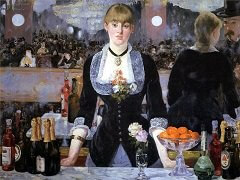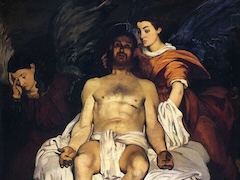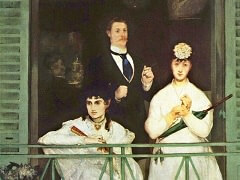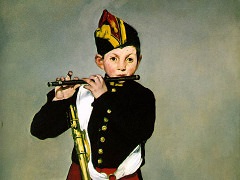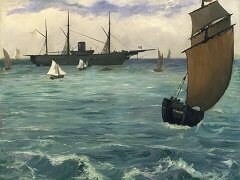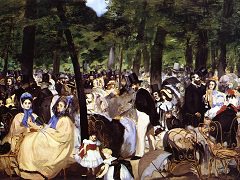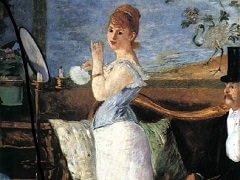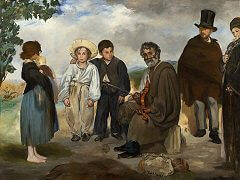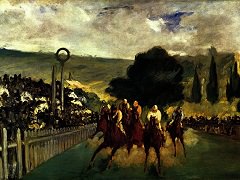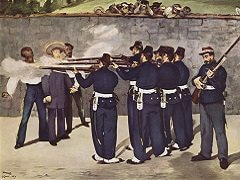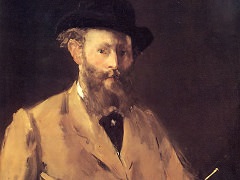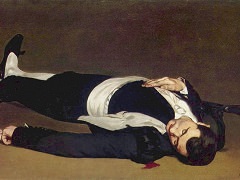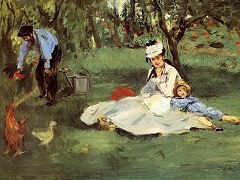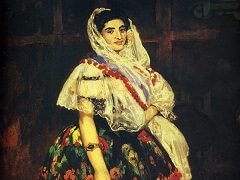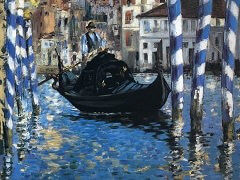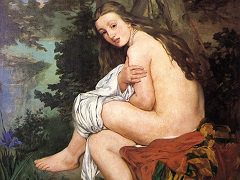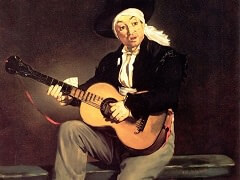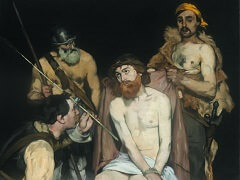Bullfight, 1866 by Édouard Manet
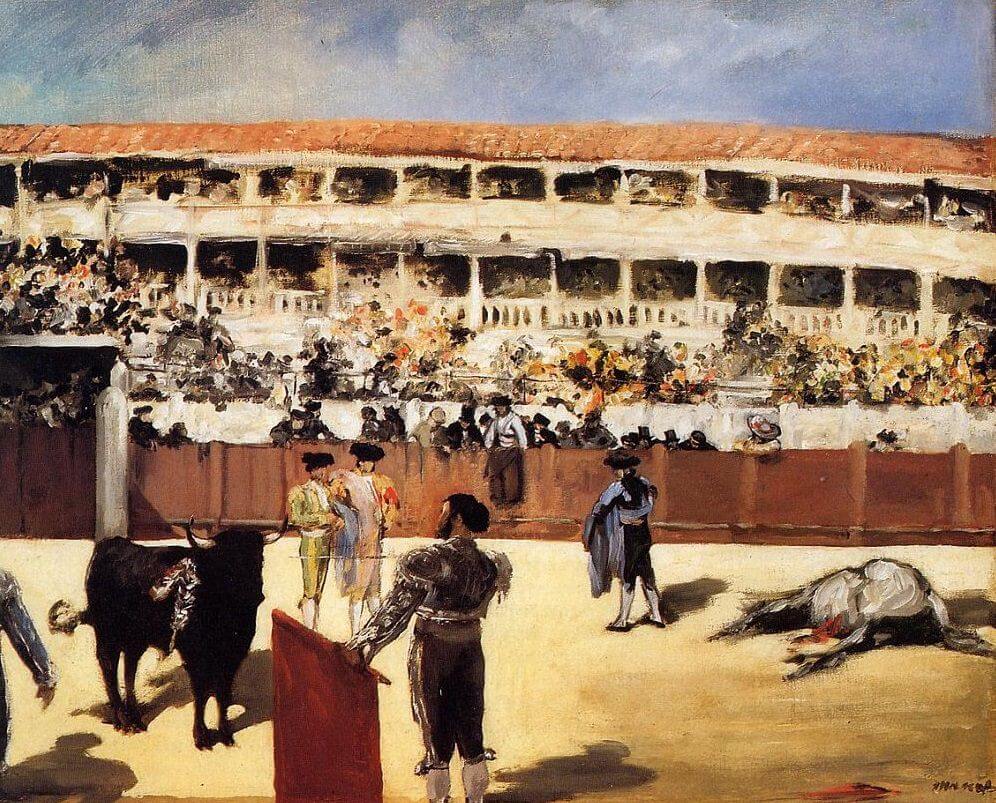
This is the most arresting and realistic of Manet's bullfights and also the most vibrant in technique. The arena radiates sunlight, and the bull and the toreros' hats make black splashes against its brilliance. A few bold strokes sketch in the crowd in the boxes and on the tiers of seats. We marvel at the skill with which the artist has preserved the unity of his composition without detracting from its effect of uncalculated immediacy. The encounter of man and beast is admirably defined and centered. The red madder of the muleta, the blood from the ripped belly of the horse, the purples, mauves, and vermilions of the spectators, all build up the pictorial atmosphere of this bull ring, with long shadows stretching out across the arena.
In this painting, although inspired by a Spanish scene often treated by Francisco Goya, Manet is entirely himself. The picture is one of those which reveal him as a forerunner of Impressionism, and he has succeeded here, more than in many other works, in conveying a feeling of drama and bringing out the cruelty of the fight. Death can be sensed beneath this clear blue sky.
Among the bullfighting scenes painted by Manet, this one, and the one in the possession of the Baronne de Goldschmidt-Rothschild, are certainly the best. Although the Chicago painting is the less finished of the two, it seems to me to have more pictorial character, with its black bull ready to charge and the suggestion of the seated crowd.

